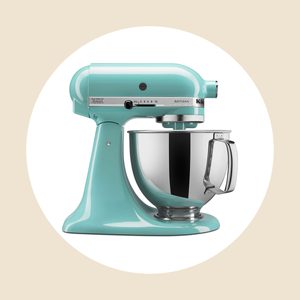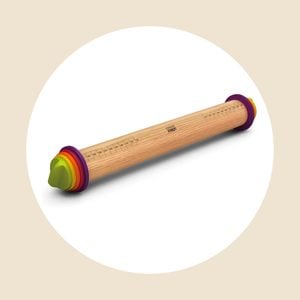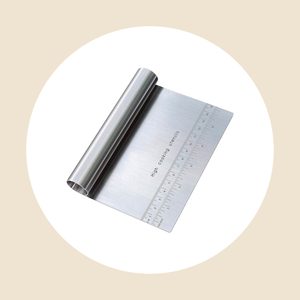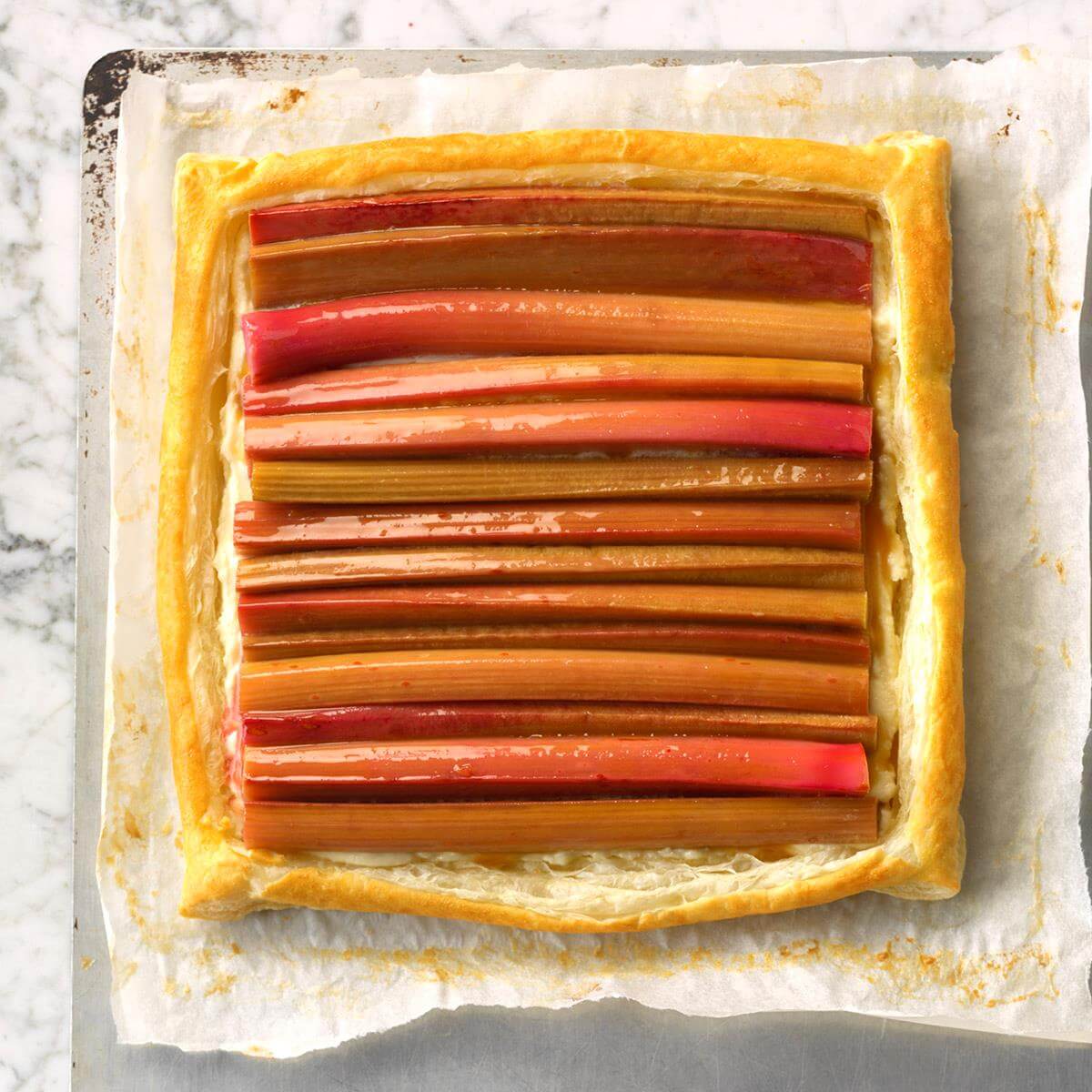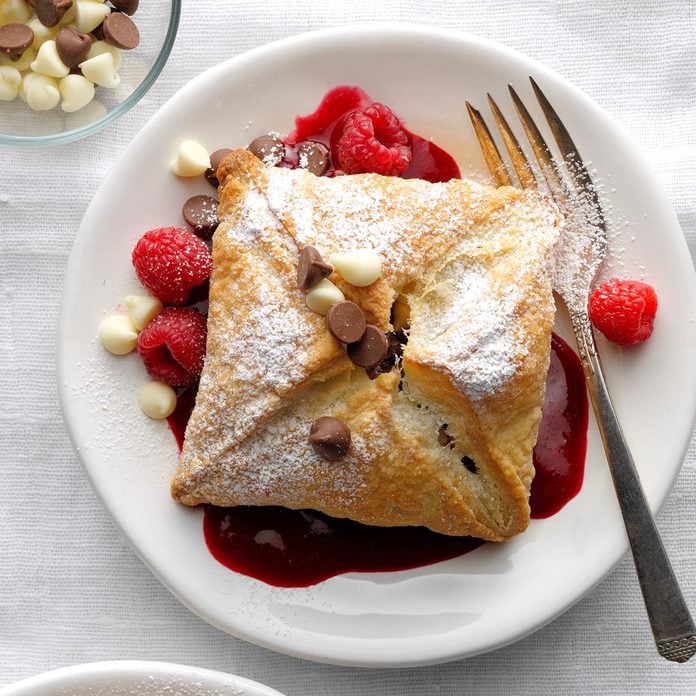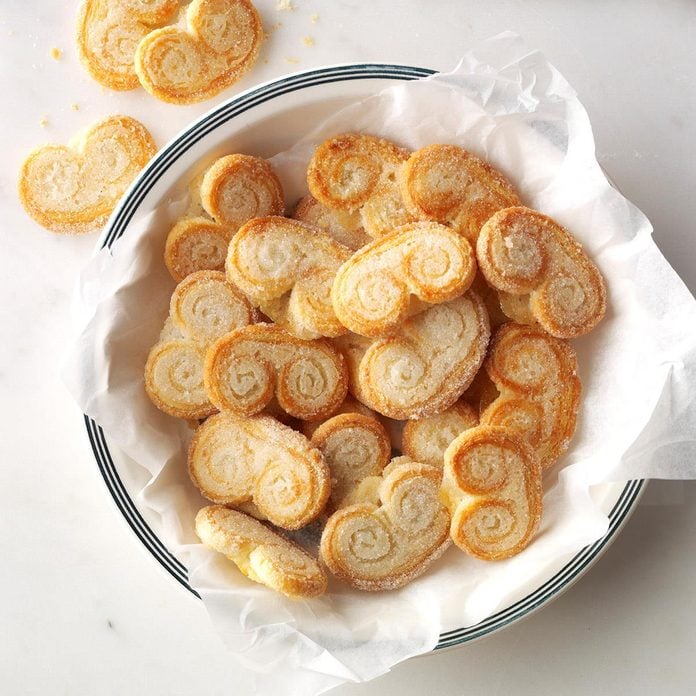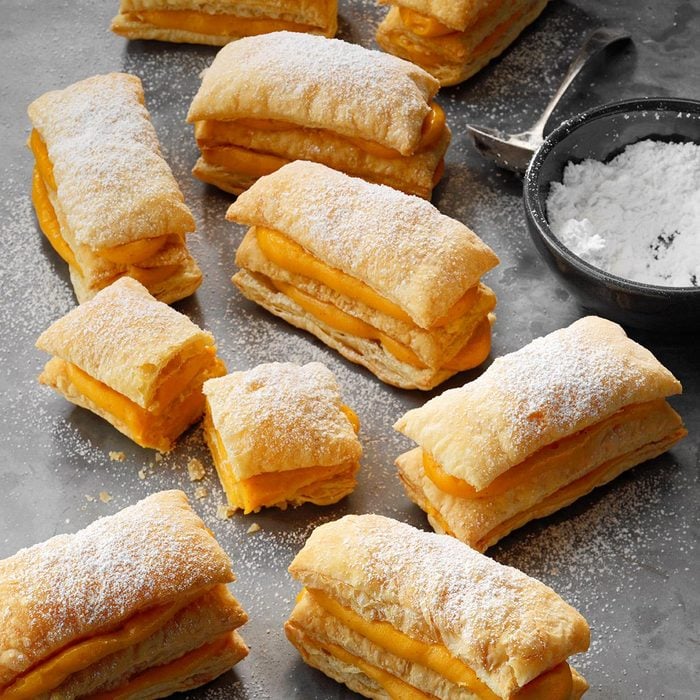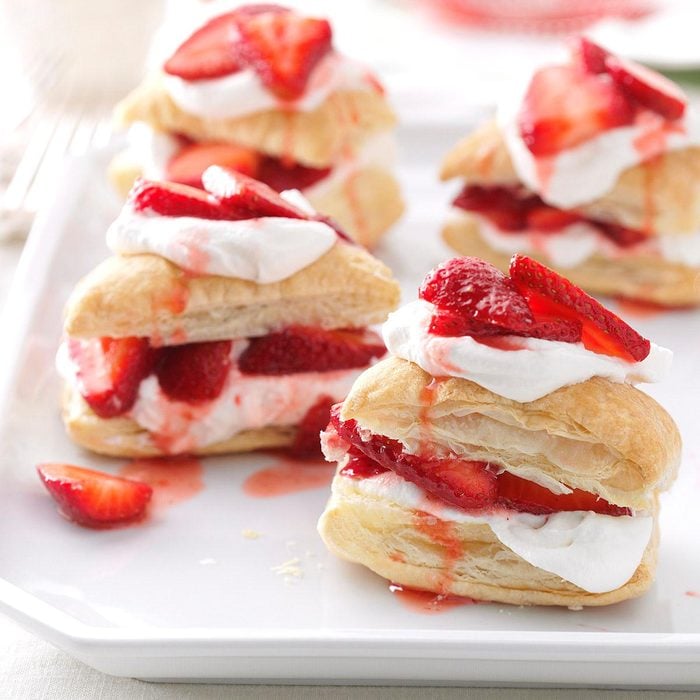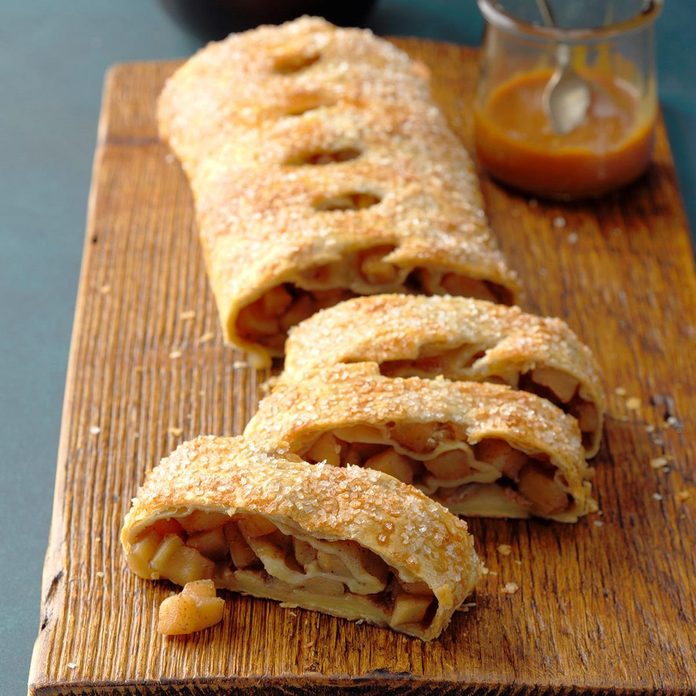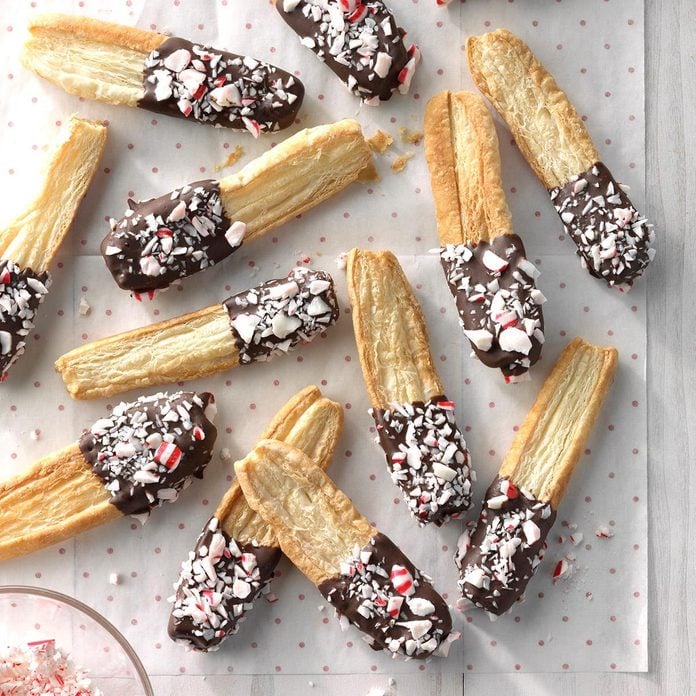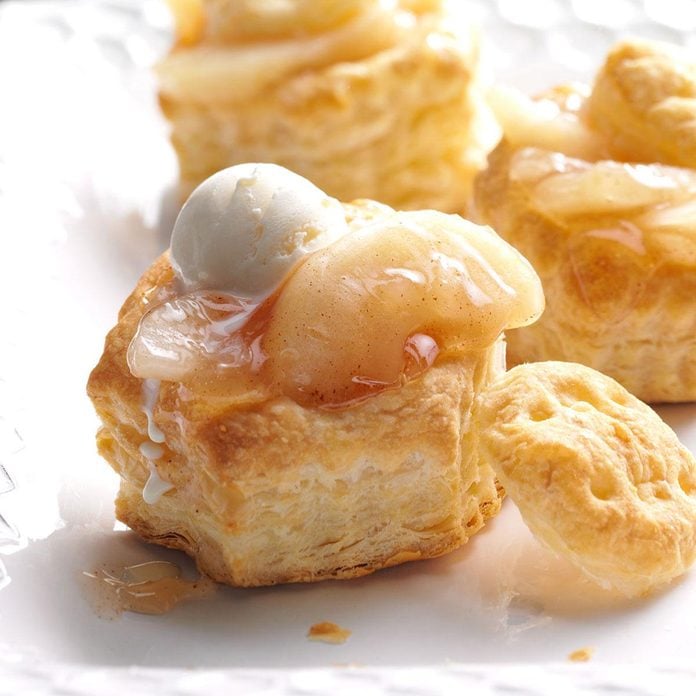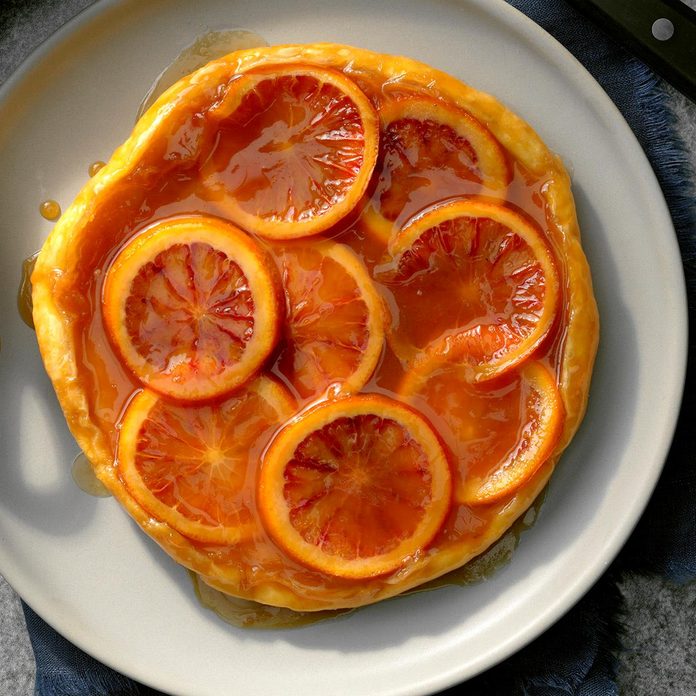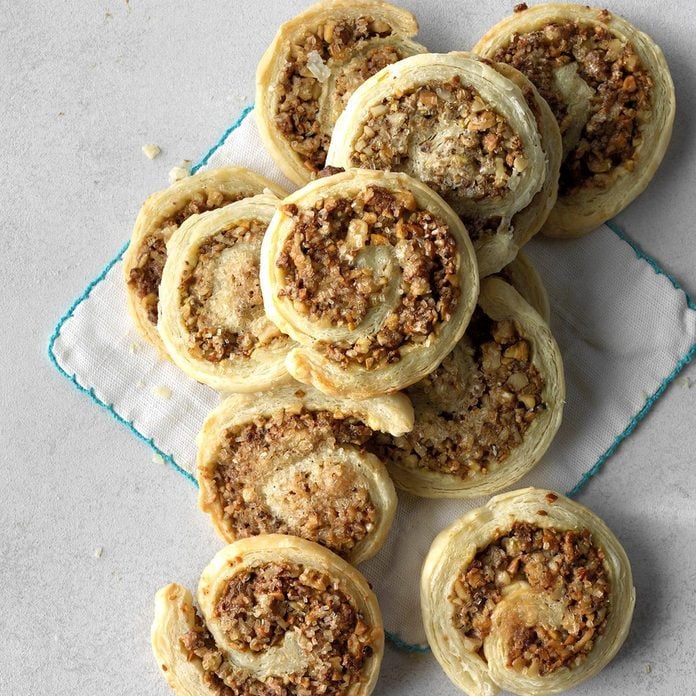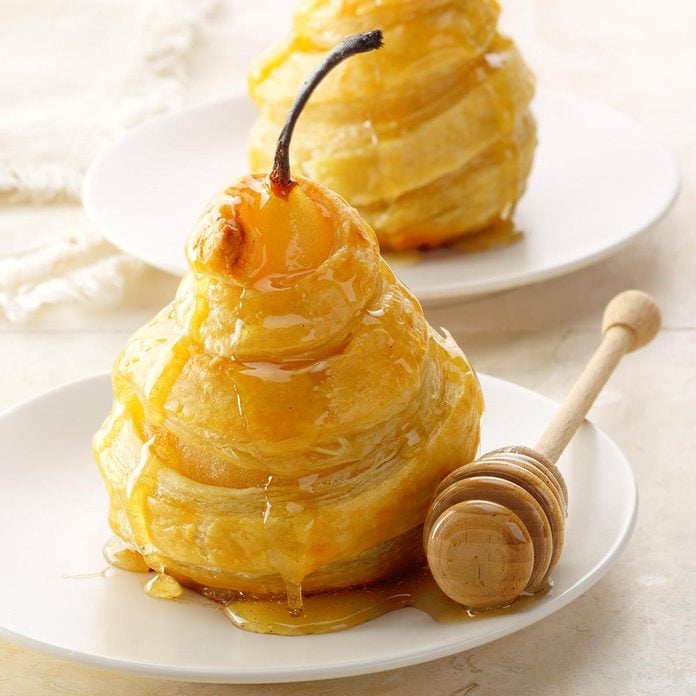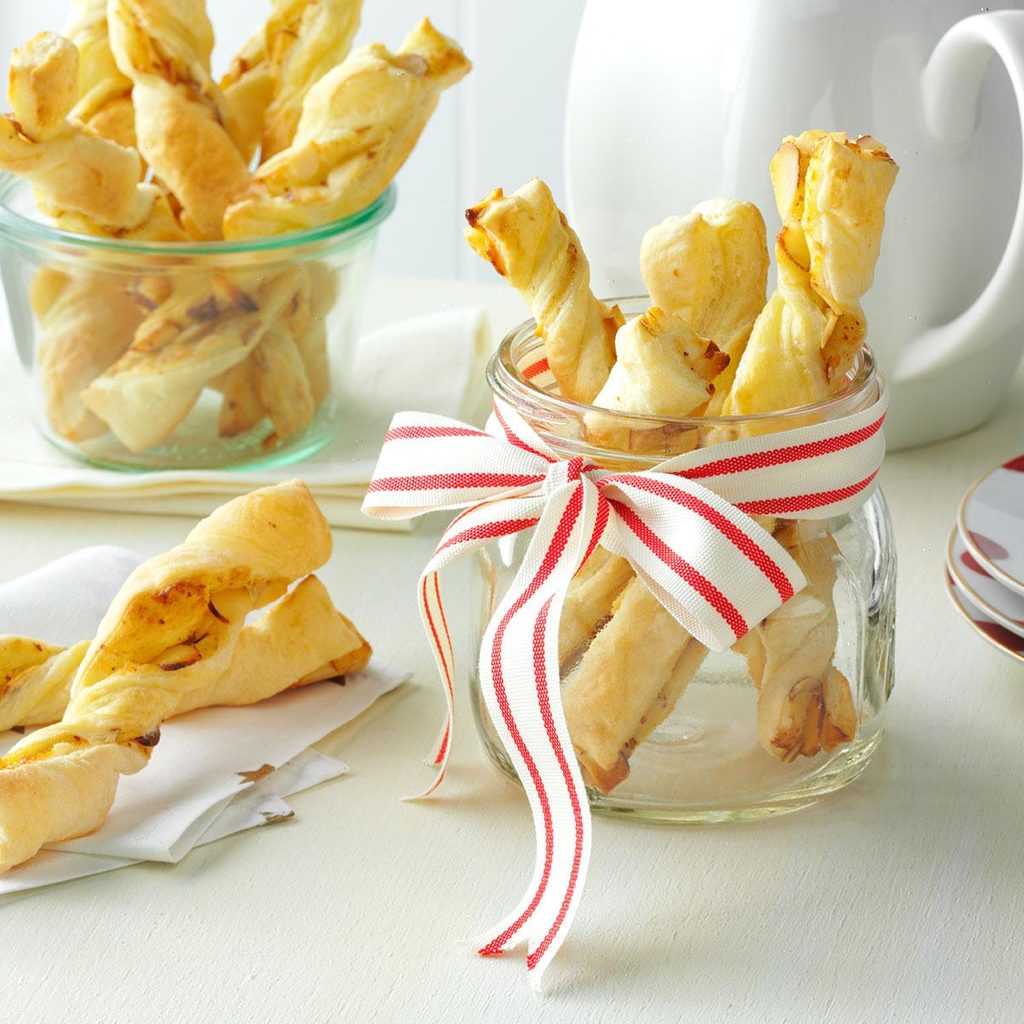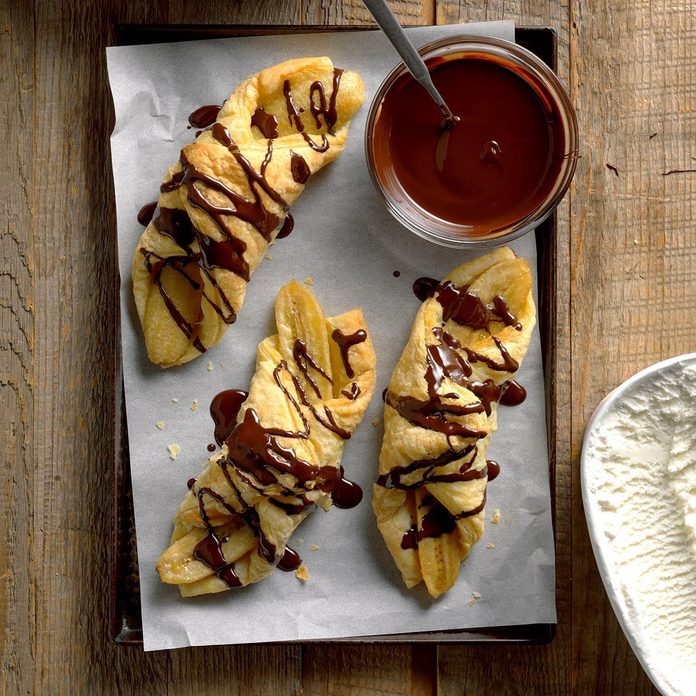How to Make Puff Pastry from Scratch
Updated: Mar. 26, 2024
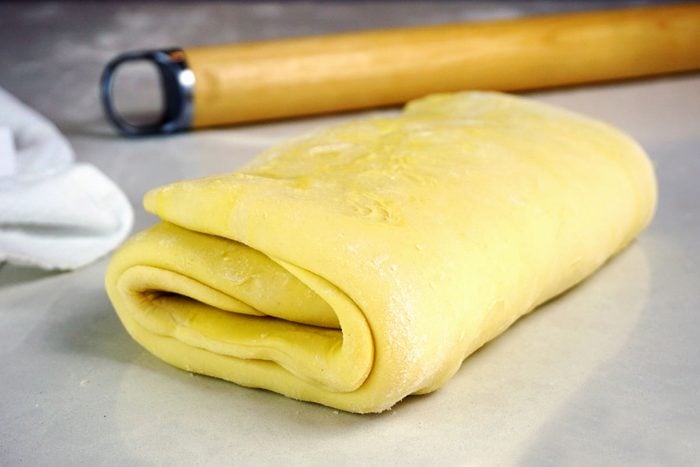
Learning how to make puff pastry (in all of its flaky, layered glory) isn't for the faint of heart—but it is satisfying.
For one second, pretend that frozen puff pastry isn’t a gift from the heavens. Yes, it’s a time-saving kitchen shortcut for all kinds of recipes; from party-worthy appetizers to impressive-looking puff pastry desserts and even Grandma’s famous puff pastry chicken potpie.
But you haven’t lived until you’ve learned how to make puff pastry from scratch (and then devoured it).
Keep reading to learn exactly how to make homemade puff pastry. You’ll need some patience, ample time (don’t skip a turn!), and careful planning to enjoy perfect flaky puff pastry at home.
Why Should You Make Puff Pastry From Scratch?
We know that homemade is always better than store-bought! Plus, when you make puff pastry from scratch, you can control the exact ingredients inside and opt for your favorites—like a Test Kitchen-Preferred butter.
I opted to make puff pastry from scratch because none of our local grocers had it in stock (thanks to global supply chain issues that have caused food shortages) and I had to make custard square, a popular dessert from New Zealand.
What Is Puff Pastry?
It’s light flaky pastry made with laminated dough. If you’re not a baking whiz, laminating dough is a process in which layers of pastry dough and butter are rolled and folded together. (It’s the same process used for homemade croissants.) The thin, delicate layers are the key to light, ultra-flaky pastry.
You may think that puff pastry sounds a lot like phyllo dough, another popular freezer item that’s a shortcut to for countless recipes. However, these two products are very different in taste, appearance and application. While both are flaky, the main difference is that phyllo dough is much leaner than puff pastry, containing only a little oil as opposed to the whole block of butter used to make homemade puff pastry.
Key Ingredients in Puff Pastry
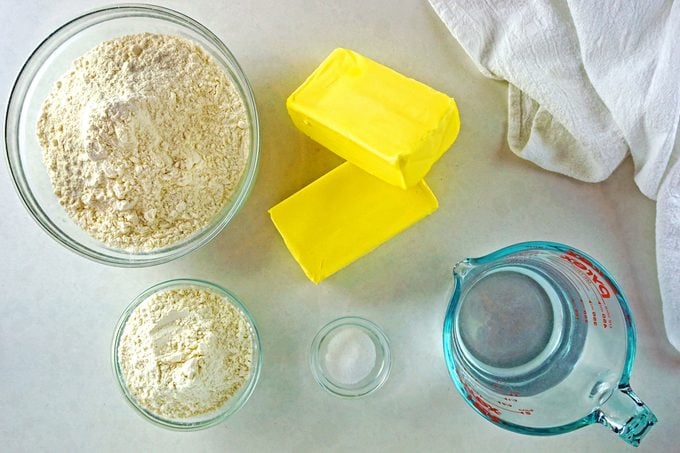
Butter
Butter is the single most important ingredient when learning how to make puff pastry. It gives the pastry its mouth-watering flavor and signature flaky layers.
During the baking process, the water content in the butter evaporates as it melts, creating steam that lifts and separates the layers of the dough, and thus, creating the air pockets in the dough we all adore. Find our Test Kitchen’s preferred butter brands.
Flour
Choosing the right is also important. While all-purpose flour is fine and can be used successfully for homemade puff pastry, we recommend using strong bread flour like this for best results. Bread flour has a higher protein content than all-purpose flour, and therefore, contains more gluten.
Gluten is important for making puff pastry because you want to create strong sheets of elastic dough during the lamination process. A weaker dough with underdeveloped gluten strands will yield a crumbly pastry (more like pie crust) as opposed to a puff pastry with well-defined flaky layers.
Water
Unlike baking bread, where you’ll want warm water to proof the yeast, for puff pastry, you’ll want to use COLD water. It will help ensure the butter incorporates properly into the dough and does not become too warm during the mixing process.
Salt
Finally, salt. While puff pastry only requires about a teaspoon of salt, you’ll be amazed at how it enhances the flavor of the dough and, believe it or not, strengthens the dough’s overall structure.
It’s important to select the right type of salt for baking puff pastry. While table salt can work in a pinch (pun intended), we prefer using a fine kosher salt for this puff pastry recipe.
Tools You’ll Need
- Stand mixer: While you can mix the dough by hand with a spoon, a stand mixer speeds up the process and prevents overhandling the dough during this initial stage.
- Rolling pin: Rolling and sheeting the dough is a step that simply cannot be skipped when making puff pastry from scratch. A large, heavy rolling pin will help you create the butter block and evenly roll out the dough during the lamination process.
- Bench scraper: We like using a bench scraper to help work the flour into the butter block and shape the puff pastry dough into a neat rectangle.
How to Make Puff Pastry
This recipe makes the equivalent of two boxes of store-bought puff pastry.
Ingredients
- 450 grams unsalted butter, room temperature, cut into large chunks
- 70 grams bread flour
Pastry Dough:
- 400 grams bread flour
- 100 grams all-purpose flour
- 5 grams kosher salt (about 1-1/2 teaspoons)
- 115 grams unsalted butter, at room temperature
- 300 milliliters cold water (about 1-1/4 cups)
Lauren’s Tip: For perfect puff pastry, you’ll need to measure as accurately as possible. Inaccurate measurement of ingredients is perhaps the number one mistake bakers make in the kitchen. Therefore, this recipe measures ingredients by weight rather than volume. I recommend investing in a digital food scale, so you can measure your ingredients and bake with precision (like the pros do).
Directions
Step 1: Prepare the dough
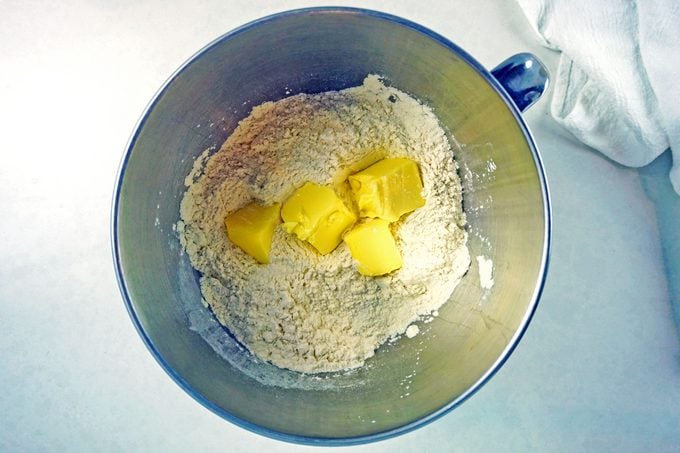
In the bowl of a stand mixer combine the flour, salt and butter for the dough.
Step 2: Blend, then add water
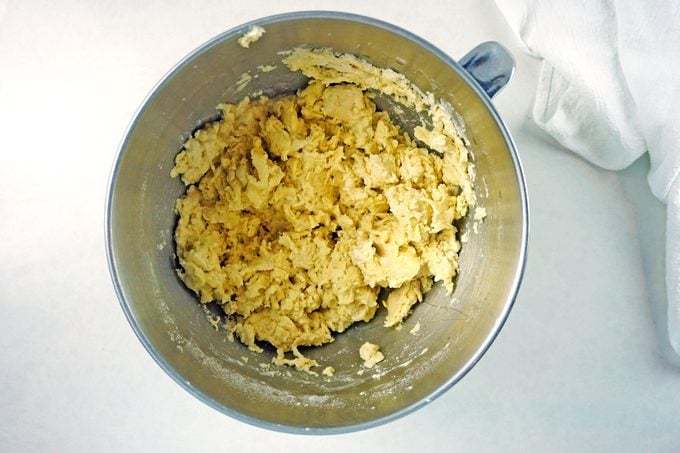
Mix on low until the butter is incorporated into the dry ingredients, then gradually add the water until a shaggy dough forms; about 2-3 minutes. It should hold together when pressed.
Step 3: Shape and chill
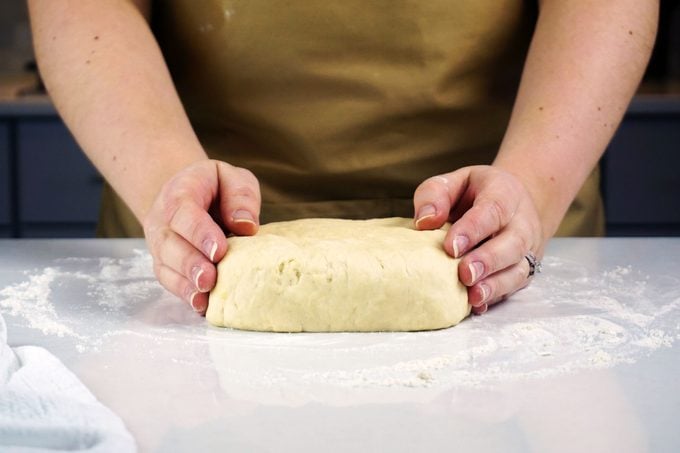
Turn out the dough onto a piece of plastic wrap and shape it into a 1-inch-thick rectangle with your hands. Wrap tightly in the plastic and then chill in the refrigerator for 60 minutes.
Step 4: Begin the butter block
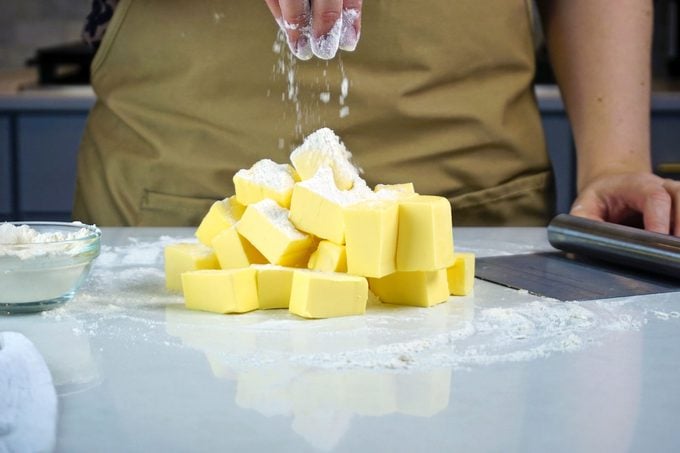
On a clean surface, make a small mound of butter and sprinkle with 70 grams of flour.
Step 5: Beat
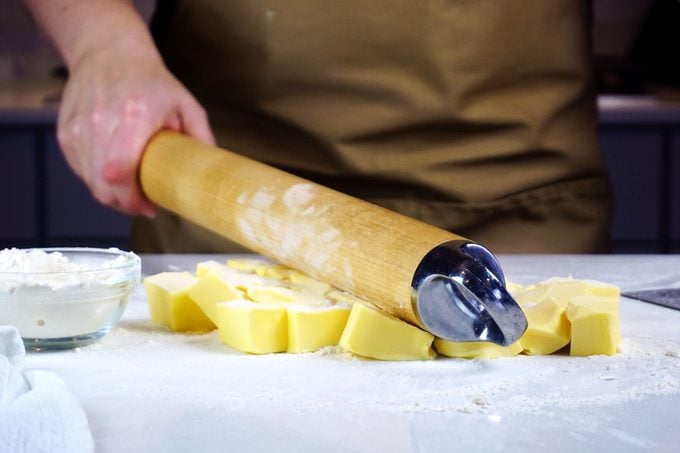
Next, using a heavy rolling pin, beat the butter and flour together (it’s a great stress reliever). As you work, use a bench scraper to lift the butter off of your surface and work the mixture together. Repeat this process until the flour is fully incorporated into the flour and the mixture is soft and pliable.
Editor’s Tip: You’ll know the butter block mixture is ready when it does not break or tear when you fold it.
Step 6: Shape the block
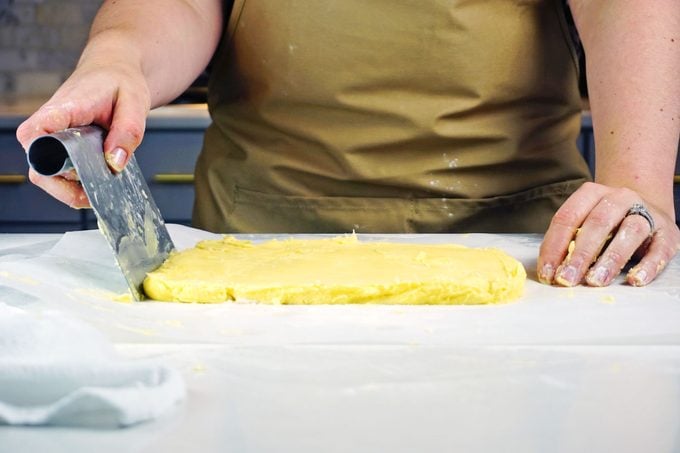
Cut out a piece of parchment paper that measures 16×12 inches. Transfer the butter block mixture to the parchment and shape it into a neat 9×6-in. rectangle with sharp edges that is about an inch thick. Fold over the excess parchment then wrap the butter block in plastic. Place in the fridge to chill for at least 20 minutes.
Step 7: Roll dough
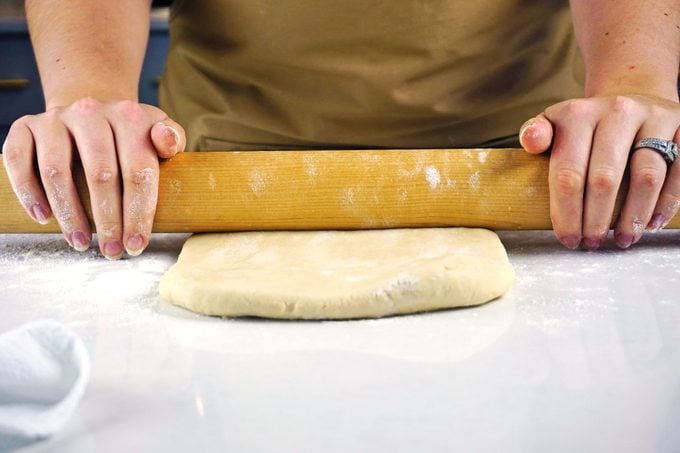
On a lightly floured surface, roll the dough out to a rectangle that is 12×10 inches.
Editor’s Tip: Now is not the time to eyeball it. Bust out a ruler and take your time to carefully measure are square of your dough with a bench scraper. This attention to detail and shaping will make the lamination process much easier.
Step 8: Position the butter block
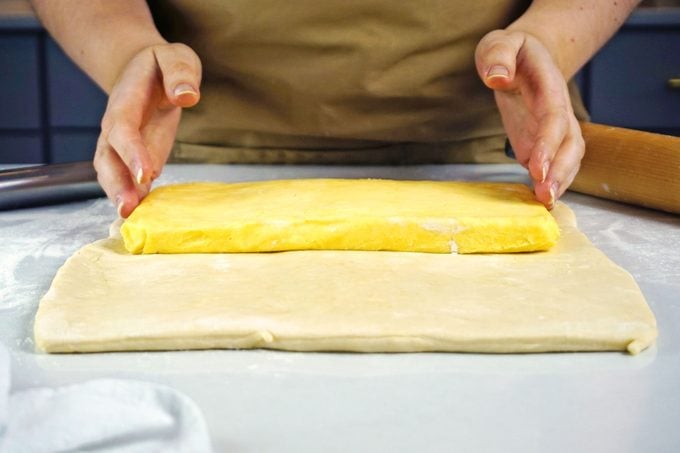
Remove the butter block from the fridge and peel away the plastic and parchment. Place the butter block on one half of the dough, leaving a half-inch margin around the edges.
Step 9: Encase the butter block
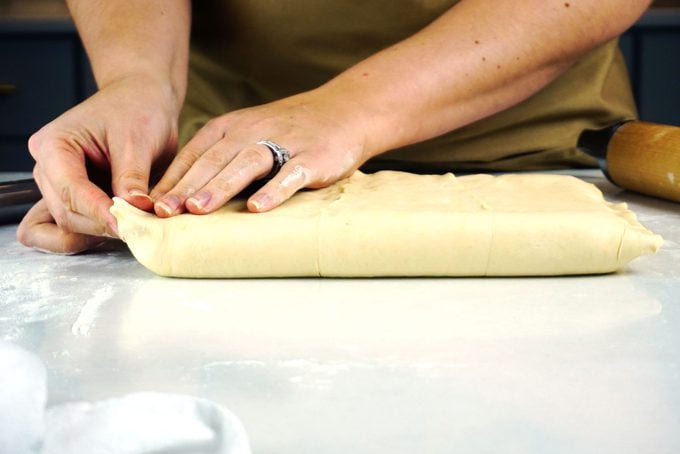
Fold the top half of the dough over the butter block, and pinch the edges closed with your fingers to seal. Then pat the edges back into a neat rectangle. Wrap the pastry dough tightly in plastic wrap and chill for 30 minutes.
Step 10: Roll
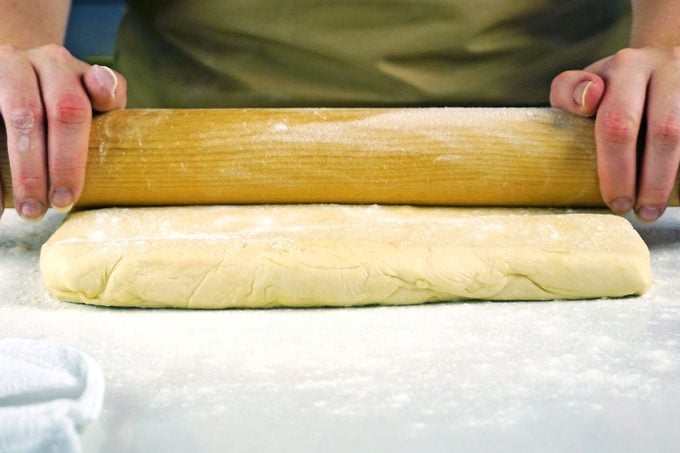
Remove and unwrap the dough. Roll it out, on a lightly floured surface, to a rectangle that is 18×12 inches in and about a half-inch thick.
Step 11: First fold
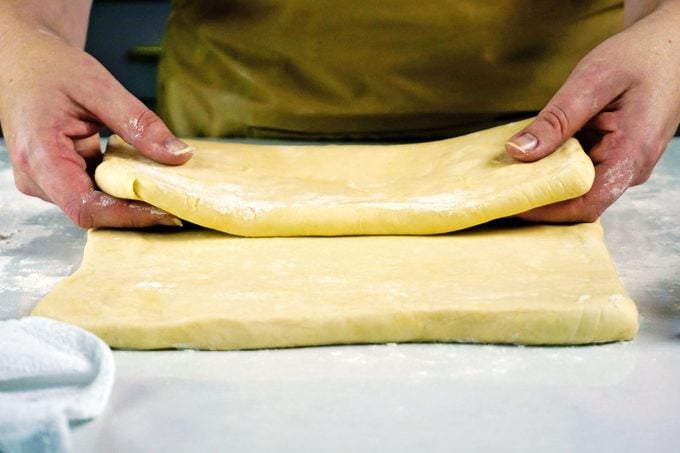
Taking one of the shorter sides of the dough, fold it in, toward the center, about 1/3 of the way across the dough. Repeat with the other side, overlapping the folds, so you have three layers of dough. It should look like a brochure.
Step 12: Mark and chill
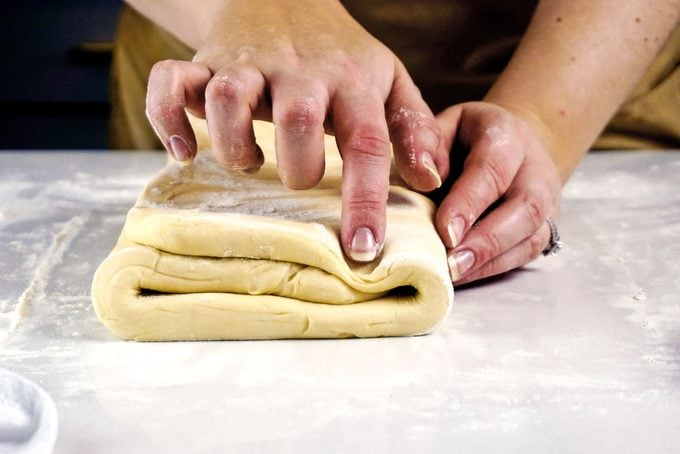
Use your finger to make an indentation in one end of the dough to remind you that the first fold has been completed. Wrap the dough back in the plastic and return to the fridge to chill for 30 minutes.
Editor’s Tip: If, at any stage of the rolling or folding process, you find your dough to be too warm or sticky, return it to the fridge to firm up a bit. (The same rule applies when making homemade kringle.)
Conversely, if you accidentally let it chill too long, let the dough sit at room temperature to soften for a few minutes until it’s easier to work with.
Step 13: Second fold

Remove the dough from the fridge and repeat the process outlined in steps 10, 11 and 12. Chill for another 30 minutes.
Editor’s Tip: As you complete your folds, you should notice the puff pastry dough becoming smoother and more elastic. This is due to the gluten strands becoming stronger as they are developed through the rolling and folding of the dough.
Step 14: Third fold
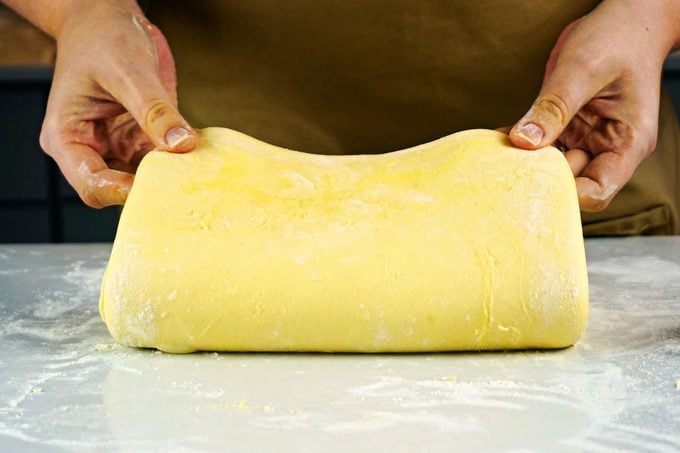
Complete your third (and final) fold. Remove the dough from the fridge and repeat (again) the process outlined in steps 10, 11 and 12. Chill for another 30 minutes.
Step 15: Use as desired

After completing your final fold, the lamination process is complete, and the dough is ready to be used as desired.
Editor’s Tip: This recipe makes the equivalent of two boxes of Pepperidge Farm frozen puff pastry, or four 9-inch square sheets. Once the dough is complete, we like to divide it into four equal pieces and then chill or freeze for future use.
Tips for Making Puff Pastry

Puff pastry is a simple (albeit time-consuming) process once you get the hang of it. It can take a few tries to master, so don’t be discouraged if your first attempt isn’t perfect. To help you on your path to homemade puff pastry greatness, we’ve assembled a collection of our best homemade puff pastry tips and answers to common questions about making puff pastry from scratch.
Can you make puff pastry dough ahead of time?
Yes! The best part about making homemade puff pastry is you can make it ahead for future use (like bread dough). In fact, because of the time involved to make puff pastry from scratch, you’ll likely need to break up the recipe you plan to use your homemade puff pastry in over two days. Make the puff pastry dough on day one and bake and finish your recipe (we recommend these Shrimp Puff Pastry Triangles) with homemade puff pastry on day 2.
As a general rule of thumb, use homemade puff pastry within 2 to 3 days of making the dough if stored in the refrigerator. If wrapped tightly in plastic, puff pastry may be kept in the freezer for up to 1 month. Defrost overnight in the refrigerator before using in a recipe.
Can you use margarine instead of butter when making puff pastry from scratch?
No, no, a thousand times, no. If you’re going to go through the process of making homemade puff pastry, do not attempt to make it with margarine (especially the spreadable kind). There’s a big difference between butter and margarine. The flavor, texture and overall result would be extremely disappointing compared to using real high-quality butter. The small amount of water content in the butter is essential to create those beautiful steam pockets (aka glorious flaky layers).
How do you make a butter block pliable?
We find adding a bit of flour to the butter block makes it much easier to handle and fold into the puff pastry dough. Using a rolling pin to beat the flour and work it into the butter develops the gluten in the flour just enough to add a bit of strength, elasticity and stability to the butter block to make it pliable, so it doesn’t crack during the lamination process.
How can you keep the puff pastry dough cold?
Keeping puff pastry dough cold as your work is critical to ensure proper lamination. If your dough becomes too warm, the butter will inadvertently get blended into the dough and/or seep out from its cocoon of pastry. If this happens, you’ll end up with puff pastry that’s tough and dense.
To keep your pastry dough cold, make sure to chill it for 20-30 minutes between folds. You’ll be surprised by how much the warmth of your hands will soften the dough as you roll it out and fold it. Chilling it between folds gives the butter a chance to firm back up and remain separate from the dough in between the layers.
Editor’s Tip: The ambient temperature and humidity of your kitchen can also impact your puff pastry dough. If your kitchen is especially hot, consider investing in a marble pastry board that you can refrigerate, so you have a cooler surface to roll and fold your dough on.
As for humidity, consider sourcing a type of butter with lower water content, typically, a European or Irish butter. When there’s more moisture in the air, the pastry will require slightly less water content in the butter to yield flaky pastry.

